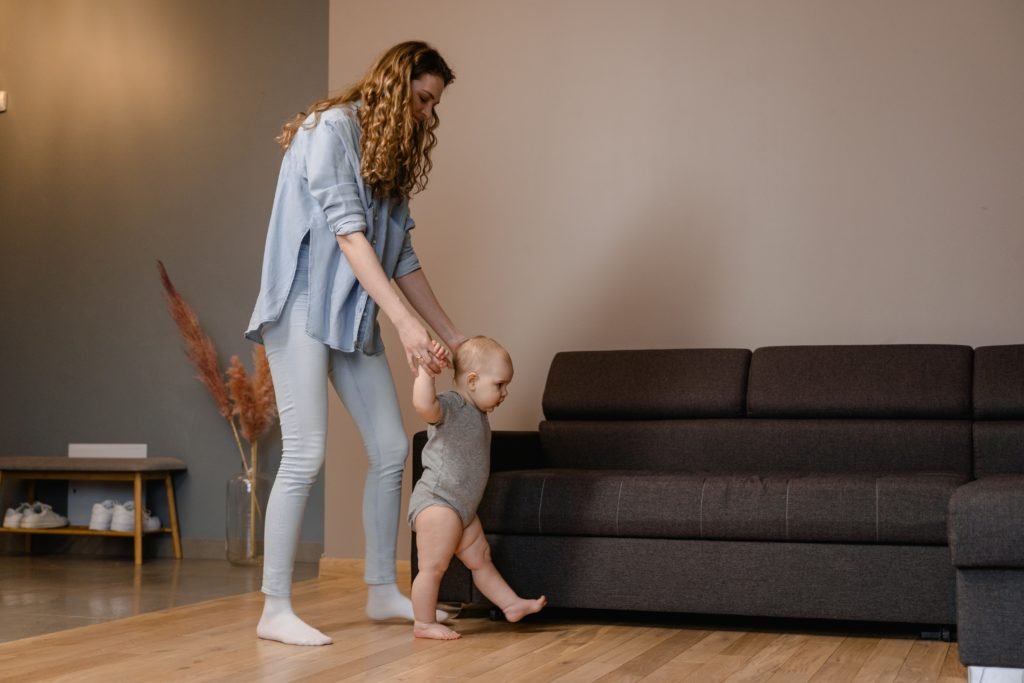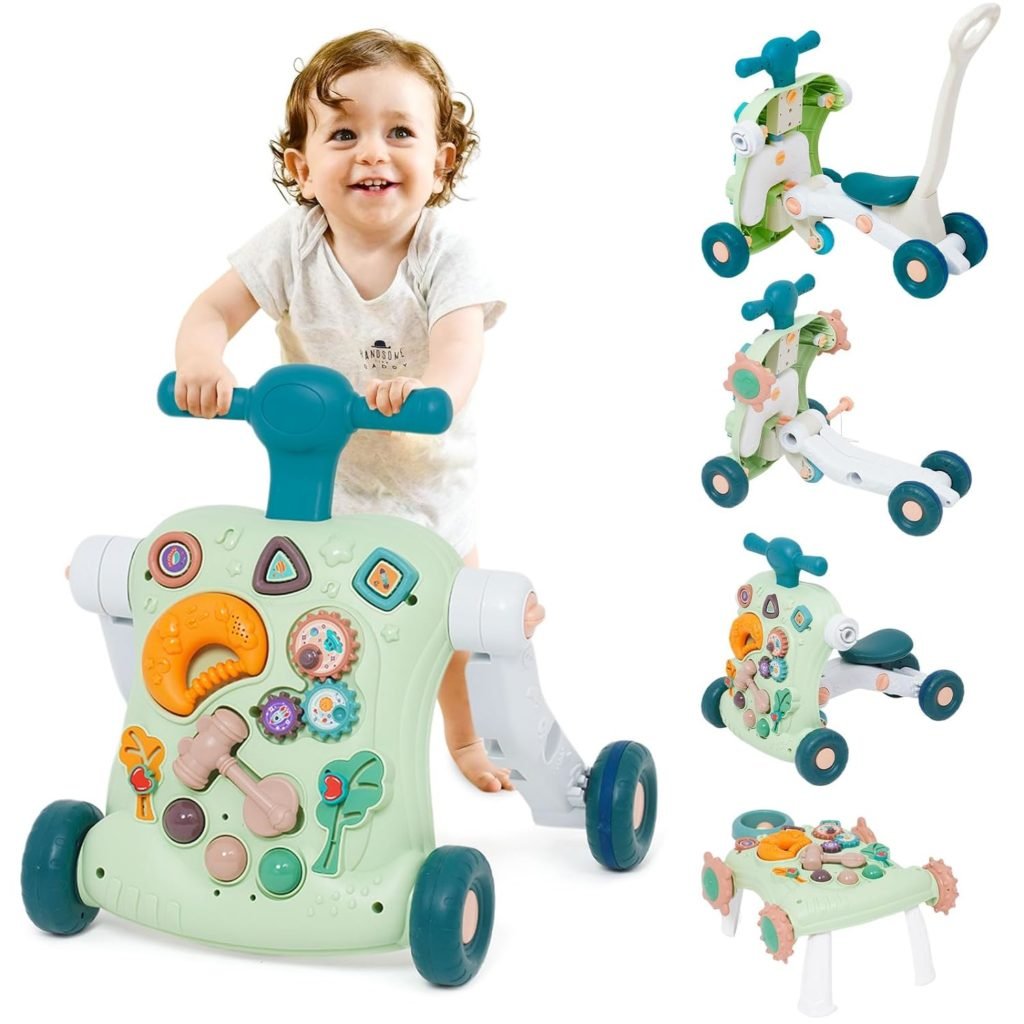
Imagine watching your precious little one take their first steps. It’s a milestone moment that fills you with pride and joy. But what if you could help your baby reach this milestone sooner? That’s where the best baby walkers come in.
Baby walkers are designed to help babies learn to walk. It works by providing them with support and stability. They can be a great way to help your baby develop their gross motor skills and coordination. But, it’s important to choose the right baby walker and to use it safely.
In this article, we’ll cover everything you need to know about baby walkers. Including the different types, safety features, and how to choose the best one for your baby. We’ll also review the top baby walkers on the market, so you can make an informed decision.
Best Baby Walkers: Different Types and Their Pros and Cons
There are three main types of baby walkers: sit-in, push, and activity baby walkers. Each type has its own advantages and disadvantages, so it’s important to choose the right one for your baby.
Which Type of Baby Walker is Right for You?
The best type of baby walker for you will depend on your individual needs and preferences. If you are looking for an affordable and easy-to-use baby walker, a sit-in baby walker may be a good option for you. However, it’s important to be aware of the safety hazards associated with this type of baby walker.
If you are looking for a baby walker that is less likely to tip over and that allows babies to walk at their own pace, a push baby walker may be a better choice.
If you are looking for a baby walker that is also a play center, an activity baby walker may be a good option for you.
Here is a list of things you should look for when buying a baby walker:
- Safety: Make sure the walker has a wide base and sturdy wheels to prevent it from tipping over. Avoid walkers with sharp edges or small parts that could be a choking hazard.
- Adjustability: The walker should be adjustable to fit your baby’s height and weight. This will ensure that they are in a comfortable and safe position.
- Features: Some walkers come with extra features, such as activity trays, toys, and music. Consider which features are important to you and your baby.
- Price: Baby walkers can range in price from around $50 to $200. Set a budget before you start shopping so that you don’t overspend.
Here are some more tips for choosing a baby walker:
- Read reviews: Before you buy a walker. Read reviews from other parents to see what they have to say about different products. This can help you narrow down your choices and choose a walker that is safe and reliable.
- Buy from a reputable retailer: Only buy a walker from a reputable retailer. Also, make sure that they sell high-quality products. This will help ensure that the walker is safe and meets all safety standards.
- Inspect the walker before using it: Once you have purchased a walker. Inspect it for any defects before using it. Make sure that all of the parts are securely fastened. Also, make sure that there are no sharp edges or small parts that could be a choking hazard.
It is important to note that baby walkers are not recommended by the American Academy of Pediatrics. This is because they can delay walking development and increase the risk of injuries. If you do choose to use a baby walker, be sure to supervise your baby closely at all times.
Sit-in Baby Walkers
- Pros: Sit-in baby walkers are the most common type of baby walker. They are relatively inexpensive and easy to use. They also provide good support for babies who are just starting to learn to walk.
- Cons: Sit-in baby walkers have been linked to a number of safety hazards, including falls, injuries, and developmental delays. Additionally, they can prevent babies from learning to walk independently.
Push Baby Walkers
- Pros: Push baby walkers are less likely to tip over than sit-in baby walkers, and they allow babies to walk at their own pace. They also tend to have fewer safety hazards.
- Cons: Push baby walkers can be more expensive than sit-in baby walkers, and they may not be suitable for babies who are just starting to learn to walk. Additionally, they can cause babies to develop bad walking habits, such as walking on their tiptoes.
Activity Baby Walkers
- Pros: Activity baby walkers are a combination of a baby walker and a play center. They have a variety of toys and activities to keep babies entertained while they are learning to walk.
- Cons: Activity baby walkers can be expensive and bulky. They also have the same potential safety hazards as sit-in baby walkers.
Additional Considerations
When choosing a baby walker, it’s important to consider the following factors:
- Safety features: Look for a baby walker with safety features such as a wide base, sturdy wheels, and a brake.
- Height adjustment: Make sure that the baby walker can be adjusted to fit your baby’s height.
- Weight capacity: Make sure that the baby walker has a weight capacity that is appropriate for your baby.
- Toys and activities: If you are choosing an activity baby walker, make sure that the toys and activities are age-appropriate and safe for your baby.
Closing
Baby walkers can be a helpful tool for helping babies learn to walk, but it’s important to choose the right one and to use it safely.
Here is a summary of the key points from this article:
- There are three main types of baby walkers: sit-in, push, and activity baby walkers.
- Sit-in baby walkers are the most common type of baby walker, but they have been linked to a number of safety hazards.
- Push baby walkers are less likely to tip over than sit-in baby walkers, and they allow babies to walk at their own pace.
- Activity baby walkers are a combination of a baby walker and a play center.
- The best type of baby walker for you will depend on your individual needs and preferences.
- When choosing a baby walker, it’s important to consider safety features, height adjustment, weight capacity, and toys and activities.
If you are considering using a baby walker, be sure to talk to your pediatrician first. They can help you choose the right type of baby walker for your baby and give you tips on how to use it safely.
If you have already decided to use a baby walker, be sure to supervise your baby closely while they are using it. And remember to limit the amount of time your baby spends in a baby walker to no more than 30 minutes per day.
Final Bit of Advice
The best way to help your baby learn to walk is to provide them with plenty of opportunities to practice. Take your baby outside to play on the lawn or in the park. And set up a safe play area in your home where your baby can crawl and explore. With your help and support, your baby will be walking independently in no time!
You might want to check one of our previous blogs: Best Learning Toys for 1 Year Old







One thought on “Best Baby Walkers in 2023: A Comprehensive Guide”